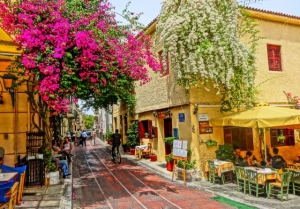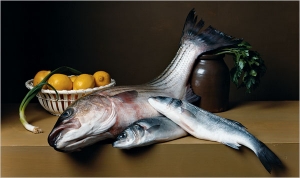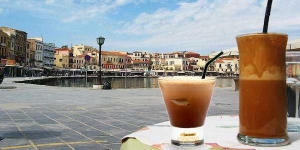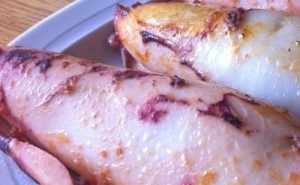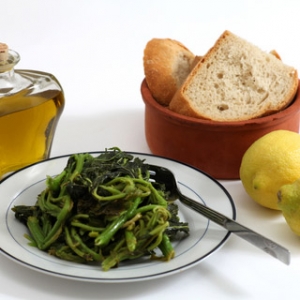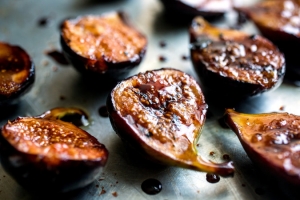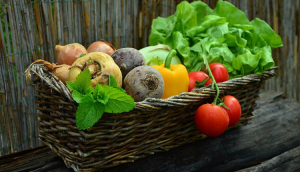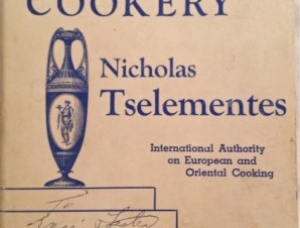LIFE & CULTURE
XpatAthens
Athens - The Truth, By David Cade
Visitors to Greece have long been discouraged from spending more than just a day or two in the nation’s capital, but a new book by a New Zealand writer shows that Athens offers an extraordinary range of exceptional experiences. ‘Tourists are advised to see the Acropolis and a couple of museums but then to rush for a ferry and flee to the Greek islands!’ said author David Cade. ‘So they’ve no idea what they’re missing out on.’
Obsessed for decades by Greece’s unique music, Cade has plunged into Athens like a spring set free. The result, ‘Athens – The Truth’, is a 400-page revelation of aspects of the city unknown not only to tourists but even to many Greeks.
Graham Beattie, publishing guru and widely experienced judge of the Commonwealth Writers Prize, said: ‘I was immediately arrested by the 20-page introduction wherein he explains his fascination with all things Greek.’ Amazon readers have said that the book is ‘absolutely addictive’, ‘charming, critical, and thought-provoking’, and that it ‘makes the reader yearn for Athens’.
‘Athens – The Truth’ is a travel book that often reads more like a novel. As the author unearths the truths of the city, tension develops and the account moves towards a climax. At many points the writer’s love for Greece is obvious, but at other times his criticisms are frank. Whereas other authors appear to have been wary of treading on Greek toes, Cade tells all.
Here’s part of Cade’s description of a young Greek dancing in an Athens nightclub:
‘No longer dispirited, he rises, lifts a thigh, slaps it too, as if to show determination, and then, gazing upwards, his arms raised, he begins to glide, like an eagle dignified and free upon the winds, maintaining balance while invincibly swooping and swirling above all the challenges of life.’
‘Athens – The Truth’ has been written for anyone who has yet to encounter the true Greece. The author explained: ‘I wrote it not only to help tourists, students, or business people get the most out of Athens, but so that people at home, perhaps with no intention at all of ever actually visiting, can also encounter all those locations, people, and facts which even the most adventurous seem to miss.’
‘Athens - The Truth’ can be ordered online or from bookstores worldwide by requesting ISBN 9780955209031.
An e-book edition is available from Amazon for Kindles, iPads, iPhones, smartphones, and PCs. A second e-book edition has been made available for Nooks, Kobos, Apples, Sonys, and other devices.
Or you can get it from Public here: http://www.public.gr/product/books/english/diafora/athens-the-truth/prod5111007pp/ or from the Book Depository here:
http://www.bookdepository.co.uk/Athens-Truth-David-Cade/9780955209031
Athens - The Truth
Searching for Manos, Just Before the Bubble Burst
by David Cade
406 pages
Paperback Edition: ISBN 9780955209031
Kindle Edition: ISBN 9780955209048
Smashwords Edition: ISBN 9780955209055
Published by Tales of Orpheus
ABOUT THE AUTHOR
David Cade is a writer and actor based in the Shropshire Hills, England. He has worked in classical record production, schools, universities, and theatre. He studied Drama, Theatre Arts, and Music at the University of Birmingham and has an MA in Linguistics from the University of London. Besides the United Kingdom, he has lived in New Zealand, Fiji, Australia, and the Middle East. The music of Greece is his passion.
RELATED INFORMATION
Author’s website: http://www.davidcade.net
Twitter: https://twitter.com/AthensTheTruth
Facebook: https://www.facebook.com/AthensTheTruth
New Book: My Greek Island Home
In My Greek Island Home Claire Lloyd shares the story of how illness brought to an end her fast-paced London life as a very successful magazine art director, film maker, photographer and property developer, before finding renewed purpose in life when fell in love with the Greek island of Lesvos and the people who live there, and made it both her home and her passion.
Featuring evocative images of the beautiful island, the home which she and her partner have lovingly restored, and the many friends - and animals - who have welcomed them into their lives, My Greek Island Home is a celebration of a way of life that Claire and Matthew have embraced with open arms. They have now bought and restored a second home, Ken's Spiti, also featured in the book, which they offer for personally-tailored holidays to people wishing to experience and be part of 'the real Greece'.
My Greek Island Home by Claire Lloyd will be published by Clearview Books on 28th April.
Athens Nominated For ‘European Best Destination 2015′
Athens, Greece, has officially been nominated to run for the title of “European Best Destination 2015″. The competition has been launched by the European Best Destinations (EBD), a European organization based in Brussels and developed to promote tourism in Europe.
20 European cities will compete for this trophy between January 20 and February 10: Amsterdam, Athens, Barcelona, Berlin, Bordeaux, Brussels, Istanbul, Innsbruck, Lisbon, Ljubljana, London, Madrid, Milan, Paris, Reykjavik, Riga, Rome, Valetta, Vienna, Zagreb.
The winner will be the city with the most online votes!
One of the 20 destinations will be awarded the title of “European Best Destination 2015″. The next nine destinations with the highest number of votes will be announced through EBD’s communications, website and social networks as being one the best European destinations to visit in 2015.
 The 2015 best European Destination will be authorized to use the title and affix the “European Best Destination” logo on all its communications, adverts, website and photos; it will also have the right to authorize its own public and private partners to use the logo.
The 2015 best European Destination will be authorized to use the title and affix the “European Best Destination” logo on all its communications, adverts, website and photos; it will also have the right to authorize its own public and private partners to use the logo.
The destinations in the Top 10 can also use the logo by indicating that they have been chosen as one of the ten best destinations to visit in Europe. Their news, photos and videos will be shared by the European Best Destination organization’s website and major social networks throughout the year.
We Suggest A Mediterranean Approach To Sea Bass
“Maybe the otolith?” another scientist suggested.
“Ah,” Panopoulos said, “the otolith.”
He worked a knife into the fish’s head and removed the pearly ear bone. Then, using his glass as a primitive magnifying instrument, he counted the otolith’s layers, which accrue like rings in a tree. “I see four,” Panopoulos said, “and they are uneven. This fish is four years old and wild.”
That the fish before us was indeed wild is a rarity in modern Greece. Never common, wild European sea bass are today one of the more overfished creatures in the Mediterranean. So rare that when you want to say you “hit the jackpot” in Greek, you say you “epyase lavraki” — you caught a sea bass. But as is increasingly the case with prized sea creatures, the end of a fish in the sea does not mean its disappearance from the plate. In fact the diminishing of a wild population is often the trigger that starts research on a new species’ domestication.
Sea-bass farming has been a long time in the works. It was piloted in France and Israel in the 1960s, and it took years to decode the biochemistry behind reproduction and diet. A final element — the warm, protected inlets of coastal Greece, turned it into a commodity.
In Greece it began, as it should, with a man at sea. In 1982, Thanasis Frentzos set sail from Kefalonia, an island some archaeologists believe was Odysseus’ Ithaca. Frentzos bears a certain resemblance to Homer’s protagonist, and so it follows that when he traveled to Sicily to purchase 100,000 inch-long sea-bass juveniles, his return trip was interrupted by a fierce gale known as the donkey mistral, and 90,000 bass perished in the storm. He installed the surviving bass in a pen and grew them to maturity. From this first farm (now called Kefalonia Fisheries), Greece came to dominate world sea-bass production, and the Selonda company has emerged as an international leader, with exports to the United States growing to more than a million pounds in 2004 from 10,000 pounds in 2000.
American appreciation of foreign bass has risen in inverse proportion to the decline of our own domestic striped bass. Similar in shape to European sea bass, American striped bass were recently found through DNA analysis to be so closely related as to share a common genus (Morone). With their meaty white flesh, “stripers” were a favorite from the Carolinas to Maine all the way back to Colonial days. Fishing pressure on stripers mounted progressively until the mid-’70s, when the catch plunged. By the early ’80s, just as Thanasis Frentzos was sailing for Sicily, conservationists were suggesting stripers for the Endangered Species List.
But while Europeans generally turn to the farm when fish go missing, Americans tend to look to the wild. In a major conservation act, a consortium of states halted striped-bass fishing in the ’80s, and a program was introduced to rebuild the breeding stock in the Chesapeake Bay. One scientist the government engaged was Yonathan Zohar, an Israeli-born biologist at the University of Maryland at Baltimore who helped decode European sea-bass reproduction. Zohar, who refers to himself as an “OB-GYN for fish,” got wild striped bass to spawn in captivity in a predictable manner. Supplementation combined with fishing moratoriums yielded results. Today striper populations are listed as “fully rebuilt,” and the fish has once again appeared on seafood menus — alongside branzino.
To read more, please visit nytimes.com
By Paul Greenberg
Summer Coffee in Greece: Frappe Vs. Freddo Variations
The war of different coffee variations has begun. The traditional fans of frappe will not give up on the national cold coffee beverage for any other Italian-style coffee type, no matter what. The strong flavor and texture of frappe is unique and it symbolizes the summer, light spirit, good company and easy-going life. Dimitris Vakondios invented it by chance in 1957 during the International Thessaloniki Fair and ever since the frappe is typical of Greek contemporary culture. Add some milk and sugar to two or three tablespoons of Nescafe, stir very well in a shaker, pour some water and lots of ice cubes and there you go, your summer frappe is ready.
There are of course other alternatives to try. Cappuccino freddo is especially favored by Greeks. The Venetian monks version of cappuccino was established in the 17th century when they added milk and honey to Greek coffee. A milk foam called “afrogala” in Greek, lots of ice and some syrup depending on how sweet you like your coffee, create the biggest rival of frappe during the summer.
To read more, please visit greekreporter.com
By Stella Tsolakidou
Kalamaria Yemista: Stuffed Squid
In Greek: καλαμάρια γεμιστά, pronounced kah-lah-MAH-reeyah yeh-mee-STAH. Whatever your preference - large or small, frozen or fresh - this recipe works with all squid.
Ingredients:
| 1 kilo of cleaned squid 1/2 cup of olive oil 1/2 cup of dry wine (white or red) 3/4 cup of rice (preferably long grain) 1/2 tablespoon of tomato paste 1/4 bunch of fresh parsley, chopped |
1 teaspoon of salt 1/2 teaspoon of pepper 2 1/4 cups of water 2-3 cloves of garlic, minced 1 medium onion, finely chopped toothpicks |
Preparation:
Chop up the squid tentacles into small pieces.
Stir the tomato paste into the wine until smooth.
Preheat oven to 170C.
In a frying pan, sauté the onion, garlic, and 1/2 the chopped tentacles in the olive oil over medium-high heat. When the onion has softened and the mixture is steaming, stir in the wine and tomato paste mixture. Stir in parsley and cook until the mixture thickens slightly. Stir in 1/2 the water and bring to a boil. Stir in rice, turn off the heat, and wait for the rice to expand, about 15 minutes.
Using a spoon (or small measuring spoon for small squid), fill the squid tubes with the stuffing, to 2 cm from the top. Thread the top with one or more toothpicks to close and place in a baking pan. Add remaining stuffing, chopped tentacles, and remaining water.
Bake at 170C for one hour and 10 minutes.
Remove toothpicks before serving.
Yield: serves 6
By Nancy Gaifyllia
Horta, Greens…One Of The Most Popular Dishes
Horta, greens…one of the most popular dishes in Greece. There is hardly a meal at home or in a taverna that does not include at least one type of these wild greens. There are many types of horta and the Greeks attribute great values to them, especially on the island of Crete. Those in the know (I am not one of them) can tell them apart, know what they are good for, and which ones have no value or are even inedible.
Some are good for the liver, or kidneys, or cleanse the blood or all three and of course all are good for your digestive system. What fascinates me, living in the country as I do, is that the locals pick them from their own fields after the heavy rains in October-November. They do not grow them - they are collected wild. They always proudly tell you they are wild, even in the tavernas. “They come from the woods, I picked them myself this morning”.
By Greg Birbil
My wife who is of Epirote descent, remembers picking horta with her grandmother from empty lots in Massachusetts - they picked dandelions. I grew up in Brooklyn, not many empty lots and no horta. At least we never picked any.
Let me return to the “horta hunters”. A common sight in the countryside of Greece is a parked car, just off the road - Mercedes, BMW, or some other upscale car. There is a group of well-dressed older people, walking through the fields bent over scouring the ground with a knife in hand and a plastic bag in the other. Unless you realize what they are up to, it is a strange sight. Nevertheless these “horta hunters”, usually city folk, are having a great day out searching for their delicious greens. Remember, these are not poor people adding to their meager foods, but well to do people making the effort to have the delicious, beneficial greens that they grew up with.
If you are driving around the country side and see these “hunters”, you might want to join them, but make sure the field you pick horta from has not been recently used by sheep and goats, it might affect the taste.
To read more, please visit gourmed.gr
Grilled Figs With Pomegranate Molasses
These are wonderful. First you toss them in a mix of balsamic vinegar and olive oil, then you grill them on both sides just until they soften and grill marks appear (at which point they are warm all the way through and just beginning to become jammy), then you remove from the grill and brush with pomegranate molasses. It’s a match made in heaven. Serve while the figs are still warm, as a first course with goat cheese, or as a dessert with ricotta or yogurt.
Total time: 15 to 30 minutes, depending on how many figs you grill at one time
12 large or 18 medium-size ripe but firm fresh figs (1 pound)
1 tablespoon balsamic vinegar
2 tablespoons extra-virgin olive oil
1 tablespoon pomegranate molasses (available at Middle Eastern markets)
12 1/2-inch thick slices goat cheese from a log, about 6 ounces (see variations that follow)
Fresh mint leaves for garnish
1. Prepare a hot or medium-hot grill or heat a grill pan to medium-hot. Cut figs in half.
2. In a large bowl, whisk together balsamic vinegar and olive oil. Add figs to the bowl and gently toss until they are thoroughly coated.
3. Place on grill or grill pan flat side down. Grill for 2 to 3 minutes (depending on the heat), until grill marks appear. Turn over using tongs or a spatula and grill for another 2 to 3 minutes on the other side.
4. Remove to a platter or sheet pan and brush each fig on the cut side with pomegranate molasses (you don’t need much).
5. Arrange 2 slices of goat cheese and 2 to 3 whole figs (4 to 6 halves, to taste) on each of 6 serving plates, garnish with mint leaves, and serve.
Yield: Serves 6
Advance preparation: You can make this through Step 4 hours before you wish to serve, but you will have to reheat the figs, which you can do in a low oven. They should be warm. If you do this, you might want to brush with additional molasses.
Variation: Substitute 2 heaped tablespoons ricotta (2 ounces) or 3 heaped tablespoons Greek yogurt (1.5 ounces) per serving for the goat cheese
Nutritional information per serving: 236 calories; 15 grams fat; 8 grams saturated fat; 1 gram polyunsaturated fat; 6 grams monounsaturated fat; 30 milligrams cholesterol; 18 grams carbohydrates; 2 grams dietary fiber; 101 milligrams sodium; 9 grams protein
Martha Rose Shulman is the author of “The Very Best of Recipes for Health.”
To read more, please visit nytimes.com
What Fruit, Veggies & Herbs Are In Season Now?
In today's world of refrigeration and hothouse-grown produce, the distinction among seasonal produce is often lost. However, each fruit, vegetable, and herb does have a season when it is ripe and ready to eat without the help of anyone except Mother Nature - better from both a nutritional and taste perspective. In Greece, these are the seasonal fruits, vegetables, and herbs we see in our farmer's markets.
Autumn Harvest
Seasonal Vegetables
You'll still find eggplant, okra, root onions, potatoes, purslane, and tomatoes, while zucchini are at their ripest in September in early autumn in Greece.
The situation perks up again in October when cucumbers begin ripening as do dill, endive, fennel leaves, fennel roots, fresh and dried beans, root onions, peppers, radishes, romaine, and rutabagas.
Seasonal Fruits
Some fruits are at their best at this time of year, including apples, grapes, kiwi, persimmons, green olives, quince, and pomegranates. Figs, grapes, melons, and plums are also still in season. As far as nuts are concerned, walnuts and pistachios from Aegina are also good in the autumn months.
To read this article in full please visit: www.thespruceeats.com
The Tselementes Effect On Greek Cooking
According to modern-day Greek chefs and cooks, the best Greek food is based on centuries-old practices of combining naturally grown and seasonal foods with the best herbs and spices to create simple, fabulous dishes. Home sun-dried tomatoes, beans, legumes, and fresh vegetables, served with olive oil are among the best Greece has to offer.
Fish and meat are eaten less frequently, and in smaller portions, but are cooked with the same attention to herbs, oil, and simple cooking techniques. Olives, wines, spirits, and cheeses need no cooking at all. However, the foods that so closely identify Greece to non-Greeks are quite different.
Greek food expert and cookbook author, Aglaia Kremezi, writes in Some Thoughts on the Past, Present, and Future of Greek Food,
"Mousaka, pastichio, creamy avgolemono (thickened egg-and-lemon sauce), and Greek salad are the dishes that most non-Greeks consider to be the epitome of traditional Greek cooking. Yet, most of these dishes have very little to do with traditional foods. They were developed, or drastically revised, by professional cooks and restaurateurs."
The most influential of those professional cooks was Nicholas Tselementes, a Greek chef from the island of Sifnos who trained in Europe and worked in some of the world's finest hotel kitchens.
It's not clear whether Tselementes believed that French cooking originated in Greece (which it did not), or that French was somehow "better" than the simple Greek fare of the day, but the result was that he developed recipes and cooking styles based on sauces and French methods of preparation to "cleanse" Greek food of Turkish, Roman, and other influences that had been incorporated over centuries, influences Tselementes saw as barbaric. He preferred butter to olive oil, elaborate sauces to bare dishes. French was in, Greek was out. It was most probably Tselementes who created the moussaka and pastitsio we know today - with an inch of cream sauce, cheeses, and 700 calories per serving - from the original dishes which were simple combinations of ground meat and vegetables or pasta.
His theories and first cookbook, written in 1910, became the darlings of early 20th century "upwardly mobile" Greeks who saw a new sophistication in his recipes. Greek chefs and restaurateurs sought to imitate his techniques and style, hoping to attract an international and worldly clientèle with mild tastes and elaborate presentations.
To read more, please visit greekfood.about.com




